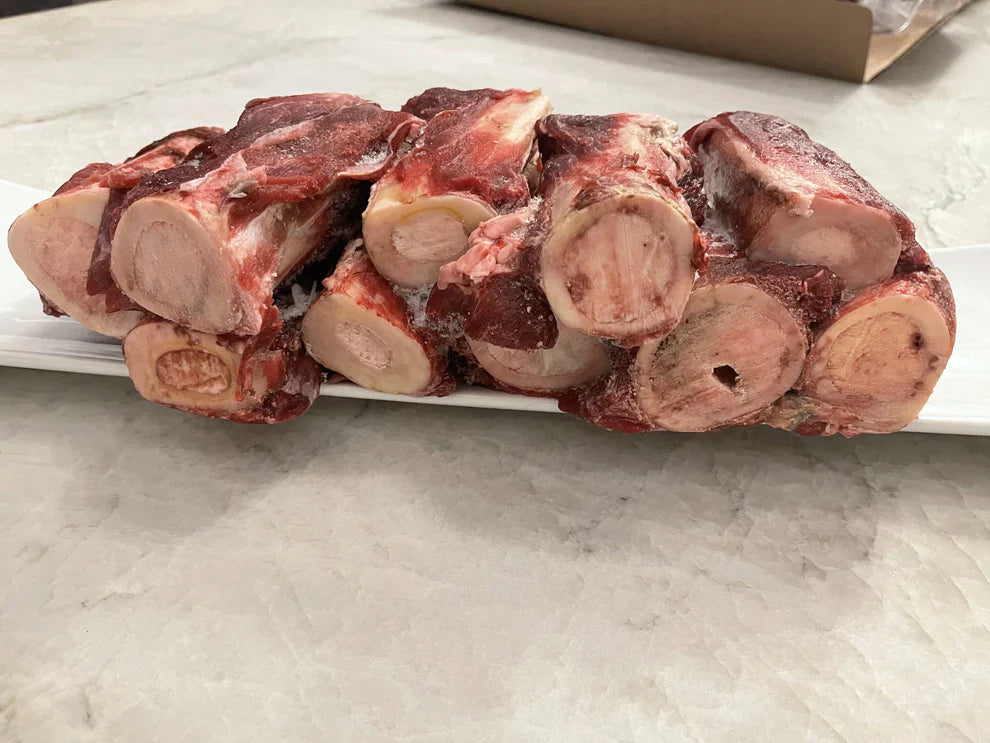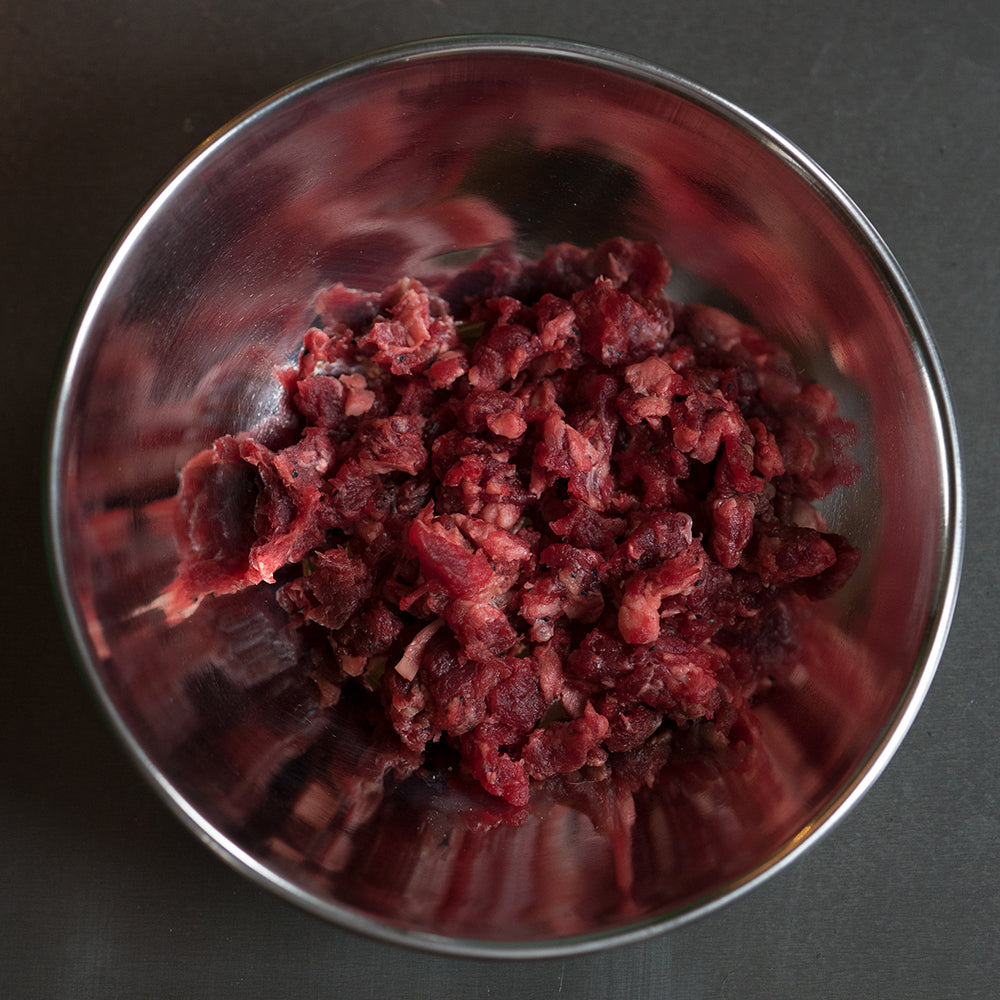
Cow Femur Bones vs. Other Dog Bones: Which Is Best?
Share
Choosing the right bone for your dog can feel overwhelming with so many options available. Among the most popular choices, cow femur bones have gained recognition for their durability, nutritional value, and ability to satisfy even the most determined chewers. But how do they compare to other bone options, and are they the right choice for your dog?
In this comprehensive comparison, we'll explore the unique benefits of cow femur bones, examine how they stack up against other popular bone types, and help you make the best choice for your furry friend.
Understanding Cow Femur Bones
Cow femur bones are cut from the thigh bone of cattle – the largest, strongest bone in the bovine skeleton. These substantial bones are naturally filled with nutrient-rich marrow and offer exceptional durability that can keep dogs engaged for hours or even days.
What Makes Cow Femur Special
The femur bone's unique characteristics include:
-
Maximum marrow content: More marrow than most other bone types
-
Dense bone structure: Extremely durable for long-lasting chews
-
Substantial size: Perfect for medium to large dogs
-
Natural shape: Ergonomic design that's comfortable for dogs to hold
Beef femur bones provide an authentic chewing experience that aligns with your dog's natural instincts while delivering exceptional nutritional value.
Natural Dental Care
The dense structure of beef femur bones supports natural dental care:
-
Natural tartar removal through scraping action
-
Natural gum massage through chewing
-
Natural dental maintenance through extended chewing
-
Natural breath freshening through mechanical action
Mental and Physical Engagement
Large cow femur bones support:
-
Natural mental stimulation and focus
-
Natural physical exercise for jaw and neck muscles
-
Natural stress relief behaviors
-
Natural activity to prevent boredom for high-energy dogs
Always supervise your dog when enjoying cow femur bones:
-
Monitor for aggressive chewing that might damage teeth
-
Watch for small pieces that could break off
-
Remove the bone if it becomes small enough to swallow
-
Ensure your dog takes breaks to stay hydrated
Quality and Source Matters
Choose beef femur bones from reputable suppliers that:
-
Hand-cut bones to appropriate sizes
When to Replace the Bone
Replace cow femur bones when they:
-
Become small enough for your dog to swallow
-
Show signs of splintering or cracking
-
Develop sharp edges that could cause injury
-
Begin to smell off or show spoilage
The 4-Inch Advantage: Why Size Matters
4-inch femur bones represent the ideal size for most medium to large dogs because they:
-
Prevent swallowing hazards: Too large to gulp down whole
-
Optimize chewing angles: Comfortable for dogs to grip and maneuver
-
Maximize marrow access: Sufficient length to reach marrow easily
-
Ensure lasting value: Substantial enough for extended chewing sessions
This carefully selected size provides the perfect balance of safety, engagement, and nutritional benefit.
Cow Femur Bones vs. Processed Alternatives
Versus Rawhide Chews
Rawhide Issues:
-
Chemical processing and bleaching
-
Potential digestive blockages
-
No nutritional value
-
Risk of toxic residues
Cow Femur Advantages:
-
100% natural, unprocessed
-
Highly digestible marrow content
-
Rich nutritional profile
-
No chemical additives
Best Practices for Serving Cow Femur Bones
Preparation and Storage
-
Keep frozen until ready to serve
-
Thaw in refrigerator, never at room temperature
-
Serve at cool temperature for optimal safety
-
Store unused portions properly refrigerated
Serving Environment
-
Provide on easily cleaned surfaces
-
Consider outdoor serving for messy chewers
-
Ensure fresh water is always available
-
Allow adequate space for comfortable chewing
Timing Considerations
-
Serve after meals to aid digestion
-
Use during crate time for positive association
-
Offer when you need extended quiet time
-
Present as special rewards for good behavior
Signs Your Dog Loves Their Cow Femur Bone
Positive Indicators
-
Focused, relaxed chewing behavior
-
Methodical marrow extraction
-
Carrying the bone to favorite spots
-
Guarding behavior (protecting their treasure)
-
Extended engagement periods
Conclusion: The Superior Choice for Serious Chewers
While every dog is unique and preferences vary, cow femur bones consistently deliver exceptional value across multiple important factors. Their combination of durability, nutrition, safety, and satisfaction makes them an outstanding choice for dogs who take their chewing seriously.
The key to success lies in proper sizing, quality sourcing, and appropriate supervision. When these elements align, beef femur bones provide an unparalleled chewing experience that supports your dog's health while bringing them genuine joy.
Whether you're dealing with a power chewer who destroys other bones in minutes, or simply want to provide your dog with the most nutritious and satisfying chew available, cow femur bones offer a natural solution that both you and your dog will appreciate.
Remember to always introduce new bones gradually, supervise initial chewing sessions, and choose bones from reputable sources that prioritize safety and quality. With the right approach, cow femur bones can become a cherished part of your dog's routine that supports their wellbeing for years to come.
Always consult with your veterinarian before introducing new treats, especially if your dog has existing health conditions, dietary restrictions, or a history of digestive issues.

